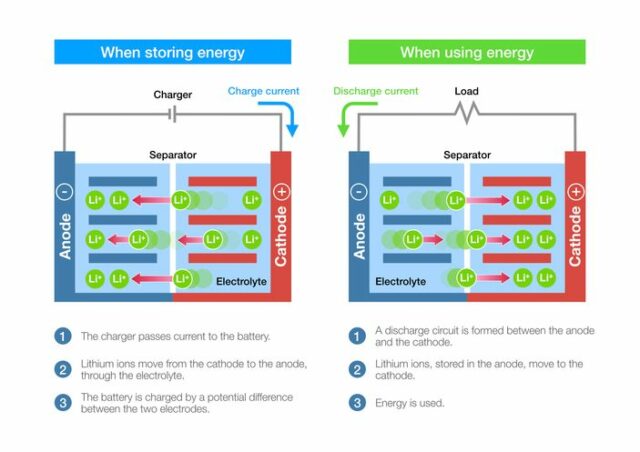When it comes to power protection, choosing the right battery for your UPS is just as important as selecting the UPS itself. The type of battery you use can significantly impact reliability, efficiency, maintenance requirements, and long-term savings.
The two most common battery technologies in UPS systems are VRLA (valve-regulated lead acid) and lithium-ion. Each comes with distinct advantages and considerations, and the best choice ultimately depends on your infrastructure, budget, and operational needs.
VRLA (Valve-Regulated Lead Acid) Batteries
Valve-regulated lead acid (VRLA) batteries have long been the industry choice for decades, characterised by a sealed, rechargeable design and a safety valve that releases excess internal pressure.
Pros
- Lower upfront cost – A budget-friendly option that reduces the initial upfront investment.
- Widely available – Easily sourced through well-established manufacturing and supply chains.
- Proven technology – Decades of industry use make VRLA a trusted and reliable choice.
Cons
- Shorter lifespan – Typically 3-5 years, requiring more frequent replacements.
- Heavier & bulkier – Requires more installation space and handling effort.
- Longer recharge times – Can take 3-6 hours to reach 90% capacity after discharge.
- Higher maintenance – Needs regular monitoring and servicing to prevent sulfation and degradation.
VRLA batteries are well suited for organisations looking for a cost-effective, proven solution, especially when budget is the primary consideration.
Lithium-Ion Batteries:
Lithium-ion batteries are a relatively recent option, becoming commercially viable for UPS systems within the past 10 years. Lithium-ion is seen as the future for UPS battery technology, especially for data centres, critical infrastructure, and edge environments.
Pros
- Longer lifespan – Typically 8-10 years, reducing the frequency of replacements.
- Lighter & more compact – Up to 45% lighter than VRLA, ideal for space-constrained environments.
- Lower total cost of ownership (TCO) – Fewer replacements and less maintenance, making it more cost-effective long-term.
- Better performance – Performs more reliably across a wider range of temperatures.
Cons
- Higher upfront investment – Costs more initially but provides long-term savings.
- Specialised disposal requirements – While less hazardous than lead-acid, proper recycling and disposal are still essential due to lithium-ion’s highly flammable nature and potential safety risk.
Lithium-ion is ideal for organisations that prioritise longevity, energy efficiency, and lower lifetime costs, and are willing to invest more upfront.
Which Battery is Right for You?
There is no one-size-fits-all solution when it comes to UPS batteries. The right choice depends on:
- Your budget and cost expectations
- The criticality of your applications
- Available space and environmental conditions
- Desired lifecycle management and maintenance requirements
For over 30 years at NPS, we have worked with businesses of every size across Australia and New Zealand to assess their critical infrastructure and provide trusted tailored power protection solutions that align with operational and sustainability goals.
Need help selecting the best UPS battery for your business? Our team of specialists is here to guide you – contact NPS today to learn more about VRLA and lithium-ion solutions.
